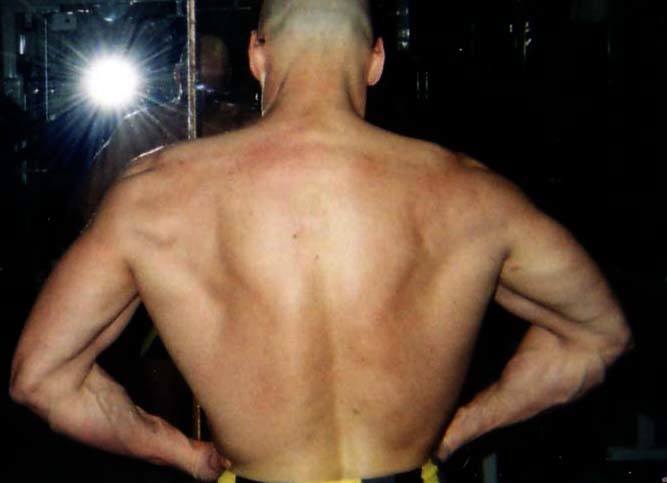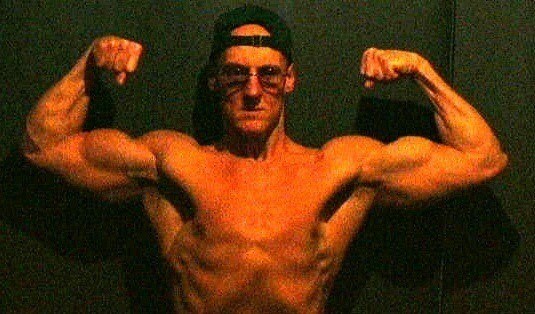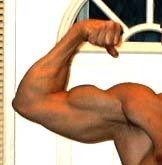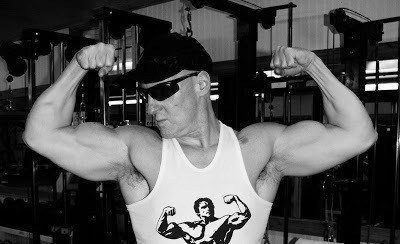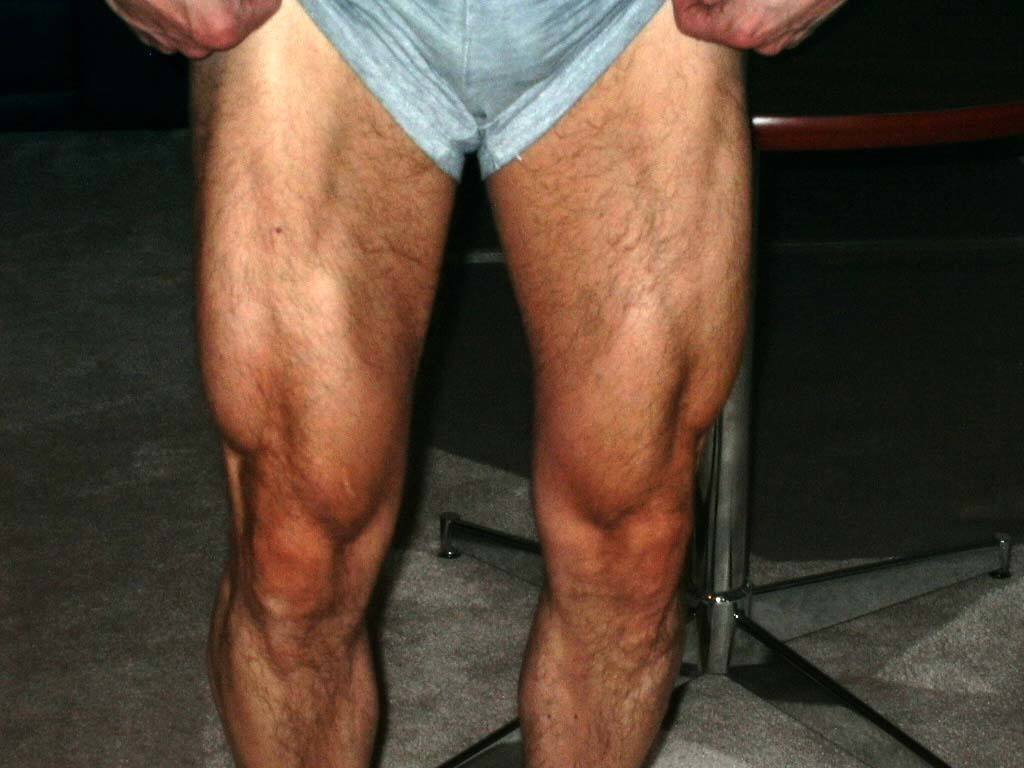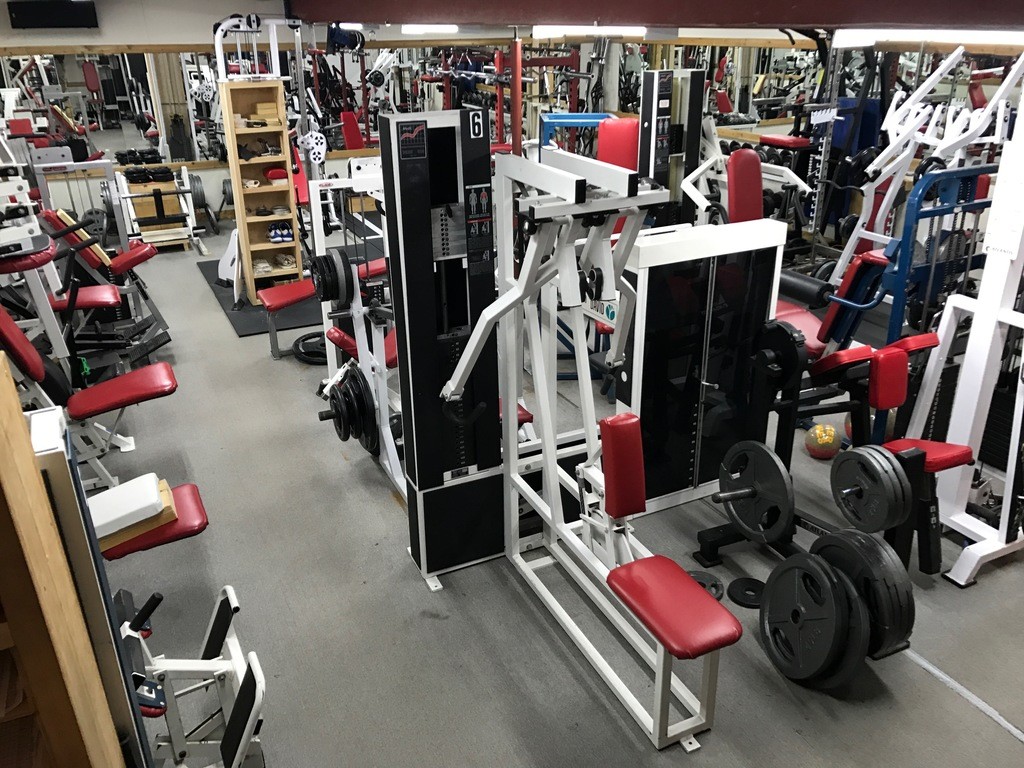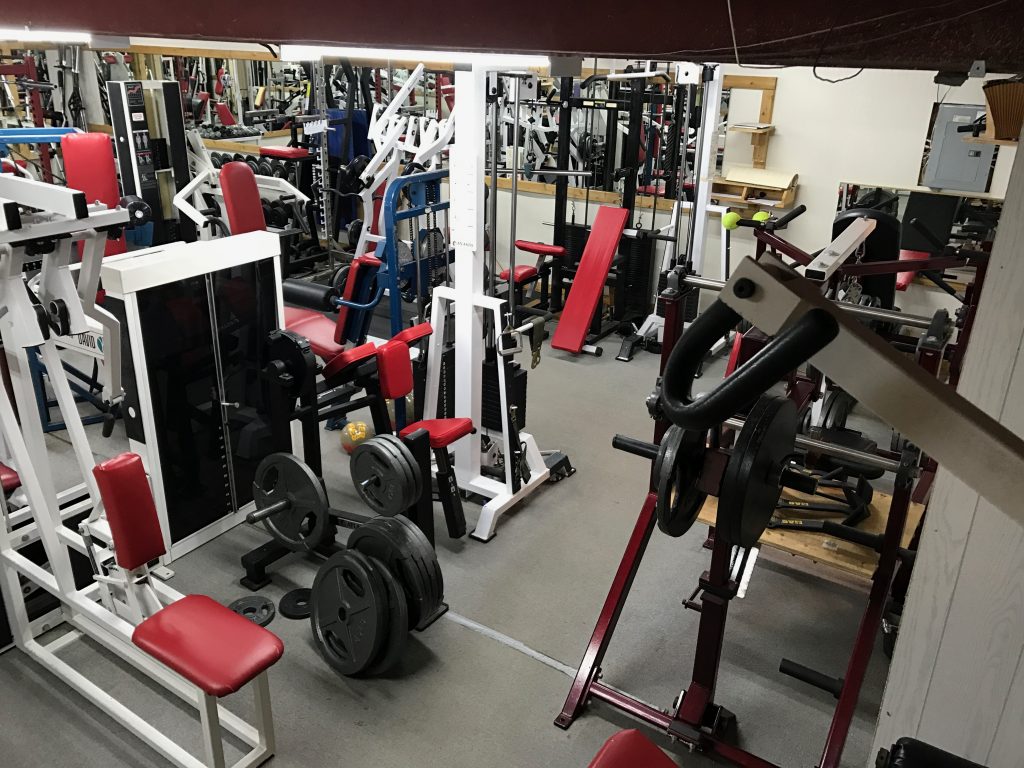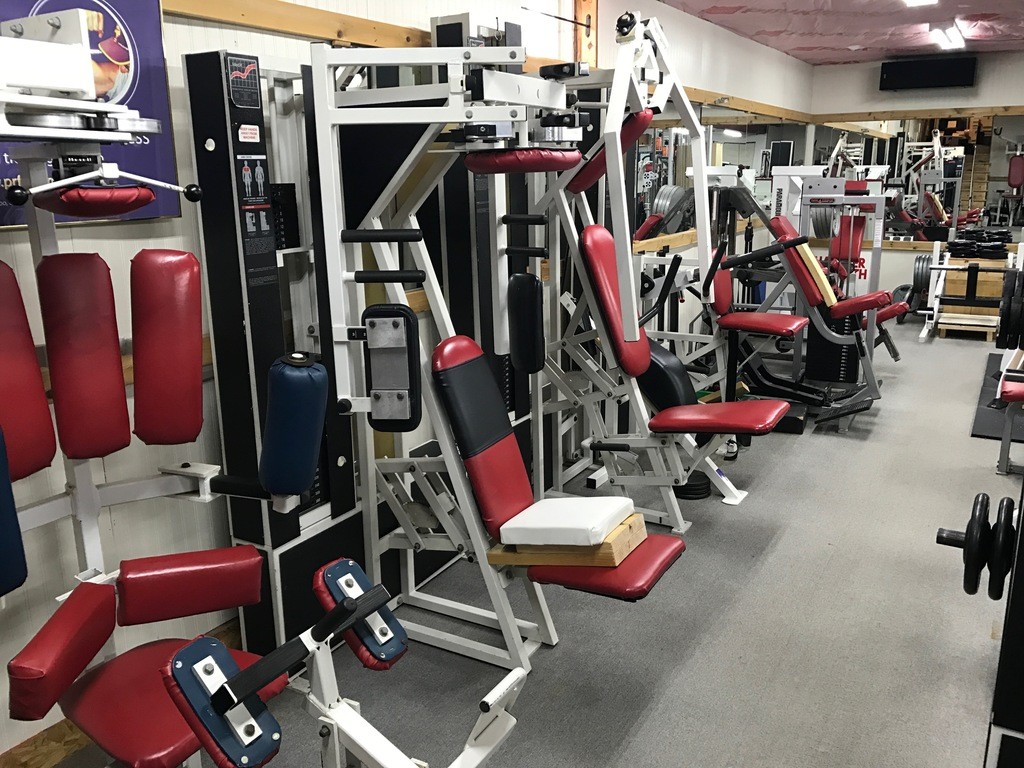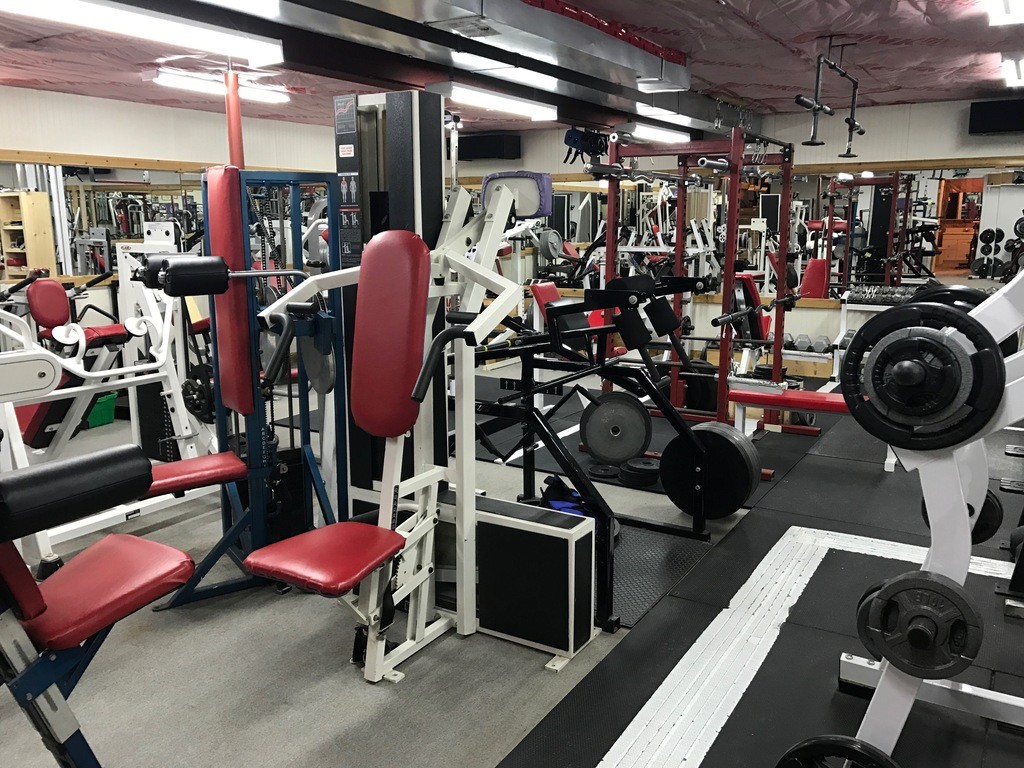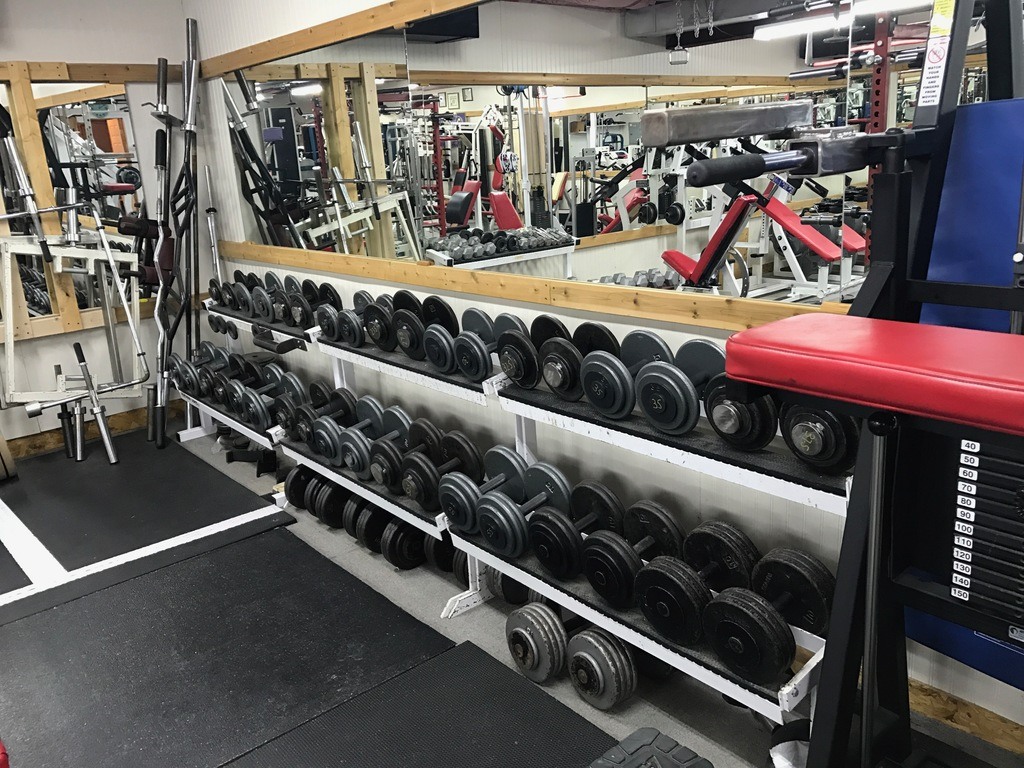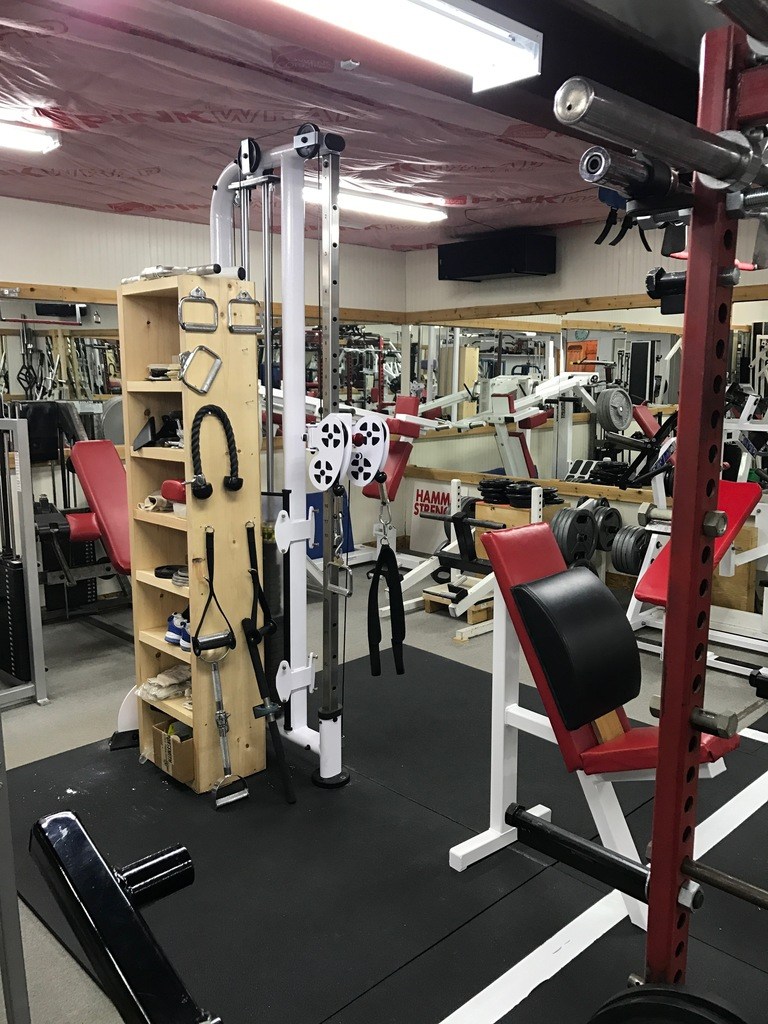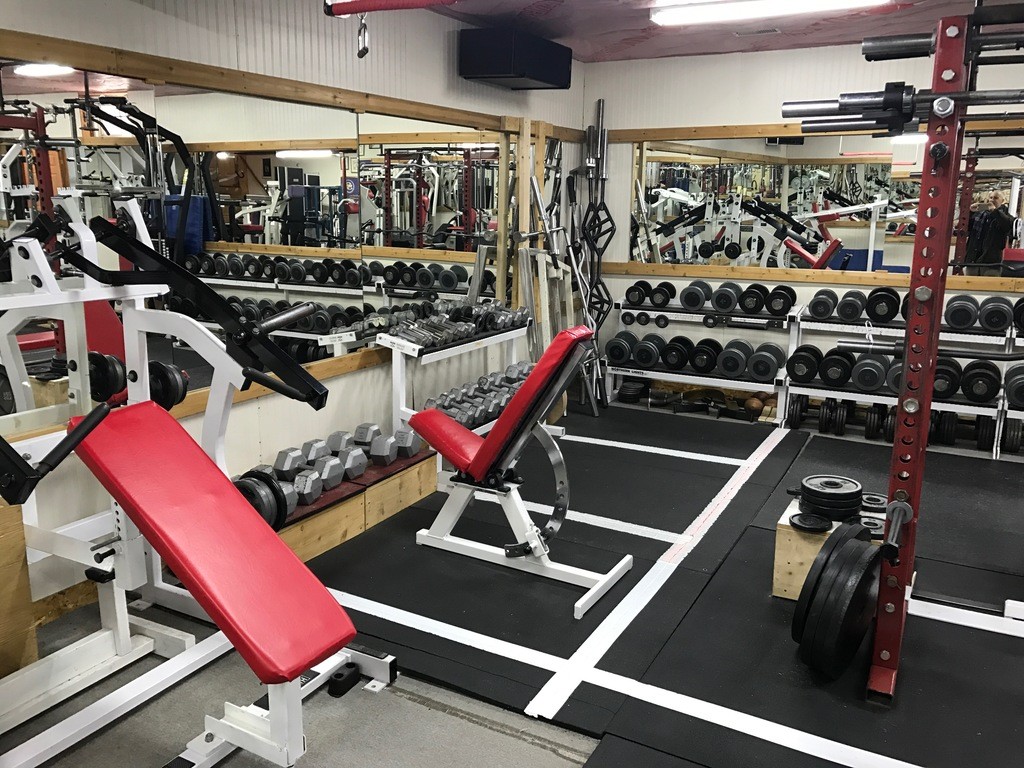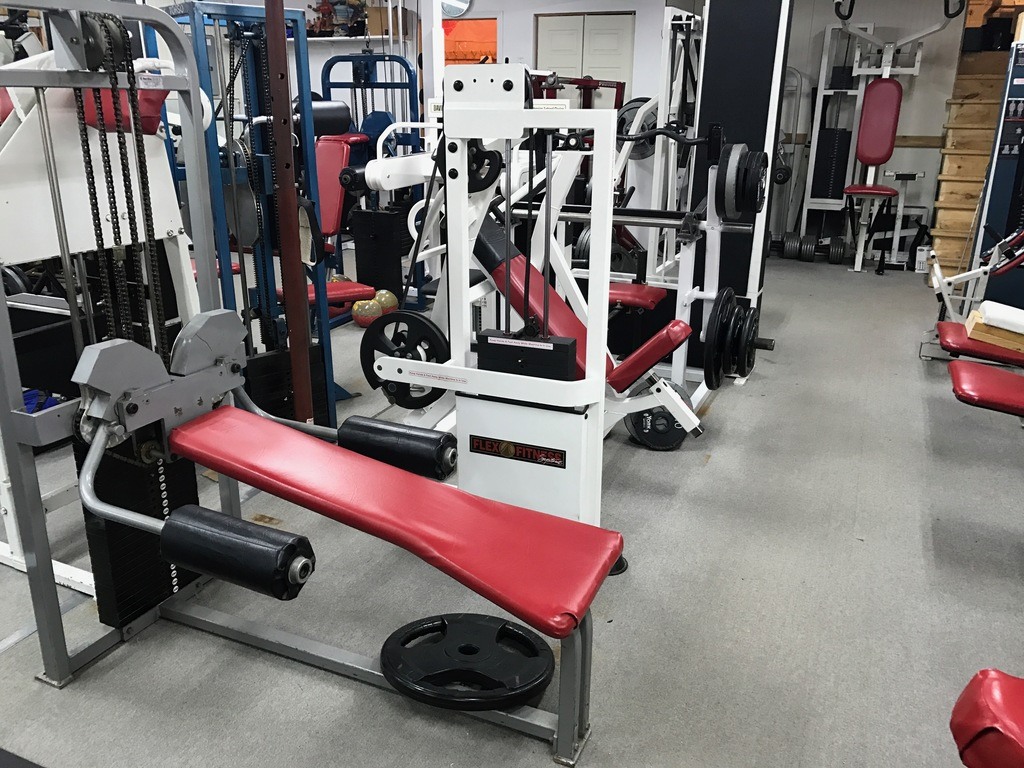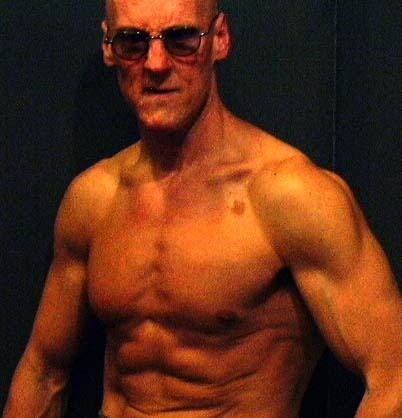

Randy Roach is the author of the 3-volume book series “Muscle, Smoke & Mirrors.” The books entail a comprehensive history of bodybuilding and all its related issues such as diet, supplements, weightlifting, fitness, strength training, drugs, and even global politics. The emphasis on nutrition intersects historically with the fitness industry and the general public. Many facets of this intriguing history are revealed for the first time, as well as an amazing cast of characters whose diets, philosophies and even idiosyncrasies alone make for a fascinating read.
Upon its completion, the over 15-year-long project will most likely breach three quarters of a million words through extensive interviews, research and analysis. Volume I was released in June of 2008 at 562 pages followed by Volume II in November of 2011 at 728 pages. Volume III, being released in a series of smaller books, launched Part 1 late in December of 2015 at 208 pages.
Reaction to these publications has been extremely favourable with endorsements coming from both the general reader and professionals in the field. David Epstein of Sports Illustrated commented on the “unbelievably extensive research”. Veteran industry writer, George Coates stated, “If Volume II is only half as good as Volume I, it will still be terrific! I must have read Volume I at least six times and I’m still amazed at the clarity and content throughout.” Paul Solotaroff of Men’s Journal and Rolling Stone called Volume II “a riveting, panoramic read”.
Industry experts John Kiiha and Bill Hinbern, called Book 1 of Volume III, “Outstanding”, and regarding the subject matter, Joe Rork stated, “Randy’s presentation is the best I have seen all these later years.”
Randy Roach has been active in the muscle building industry for over 40 years. Sixteen of those years have been spent in deep research of bodybuilding’s historical past digging up the secrets of training, diet, supplements and drugs. Before losing his eyesight, his 15 years as a computer programmer and technical writer in both the museum and environmental engineering fields has trained him in rationalizing large amounts of information making Randy perfect for this job. He has been published in three different fields. Randy now makes his living as an author and private health and training consultant in his home in Ontario, Canada. He is also the co-host, along with Tamas Acs, for their weekly podcast, “The World of Muscle” at www.theworldofmuscle.com.
—–
The following is a 4,000 word biography published over three issues of Health and Strength magazine (January, April, July) based in the UK. Health and Strength is the longest running Physical Culture magazine beginning its run back in 1898. It was an honour to be featured in their publication and my thanks to Roy Edwards who graciously gave me three of his issues to cover my story.
—–
It is with some irony that I received a phone call from Michael Payne informing me that Roy Edwards of Health and Strength was interested in doing a story on my life. It was only the night before that an American friend and fellow trainer asked if I had ever thought of doing an autobiography. The truth is that some aspect of my life story, intertwined with the evolution of my nutritional philosophies, had been pending over the past few years just waiting to be pulled to the forefront of things to do. Being from Canada I was flattered as I knew the vast majority of Roy’s Health and Strength readership had no idea who I even was. Nonetheless, Roy had expressed some fascination over the fact that I was blind and still managed to write a very large multi-volume book project on the history of bodybuilding. It was with further irony that he wanted a story on dealing with life’s adversities at the very time life had thrown yet another serious health hurdle in front of me.
Regardless, I am grateful to both Michael Payne for championing my cause and to Roy Edwards for expressing interest in my adventure. My story is by no means one of great heroics; nor was there any point in my life where I felt it necessary to echo Rocky Balboa, “Yo Adrian, I did it!” What I have written is simply the plight of most, that being a striving for the façade of worthiness in a society that has set so many superficial litmus tests defining success. Driven by fear, I would pursue the cultural pie in the sky for years mistaking it for the Light of the world. Looking back over 50 years I do concede that I had my share of challenges that would constantly pull my life from that of normalcy. Whatever success I encountered would be the result of a series of periodic awakenings and mentorships from men who mysteriously had placed so much more faith or confidence in me than I myself possessed at those particular points in time. What follows is a very condensed summary of just a few of those moments and significant figures in my growing experiences.
I was born on August 19, 1959 in the twin cities of Kitchener/Waterloo, Ontario just over one hour west of Toronto, Canada. Waterloo was a great place to grow up in the 1960s with society still moving at a much slower pace, at least comparatively to that of the 21st century. Nonetheless, life for me would take a completely different turn permanently in the fall of 1961. What was mistaken early for chicken pox turned out to be a very rare disease known as Stevens Johnson Syndrome (SJS) a violent, reactionary syndrome often fatal in its attack of the dermis and mucus membranes. Whether it was from a drug, an antibiotic or vaccine is undetermined, but the result has been compared to that of burning from the inside out.
I was hospitalized for five weeks and basically out of it for much of that time. I bled profusely out my face; both ear drums had popped; I could not open my eyes nor swallow so I was fed intravenously. Only one of the nurses who happened to be from England had familiarity with Stevens Johnson Syndrome and she had told my mother that I was the worst she had ever seen yet survive.
I did in fact pull through, but I ended up losing my left eye roughly a year later due to a related infection. The artificial eye did not fit properly and this led the Toronto specialist, Dr. Bill Callahan who had initially removed the eye to attempt to correct the problem. The next few years roughly from 1967 through 1970 was a very frustrating time for Callahan professionally and a total disaster for me physically. The problem basically stemmed from the fact that once he began cutting the obstructing adhesions they simply grew back rapidly and with much more aggression. Callahan specialized in eye plastic surgery and he must have conducted over a dozen operations on me during that period of the late 1960s. However, it was the post operative procedures that terrified me as I had never been subjected to that level of fear and pain before. To this day, I do not have a more cherished memory than that of seeing my parent’s faces coming off the hospital elevators in Toronto in order to take me home.
This barrage of surgeries ended as mentioned around 1970. Regardless of the fear invoked by my numerous treks to Toronto, life was still fun and exciting for me in the 1960s. As mentioned earlier It was a great era to grow up especially with my wonderful family and friends. Television was in but did not rule our lives as most of our fun was fulfilled outdoors. I was one to get excited about many things and paid little attention to most and that included school. Basically I was immature, materialistic, but creative and adventurous. Already by 1966 at the age of seven I knew I wanted to lift weights. Between my much older next door neighbour, Bob Zarzycki and then seeing Dave Draper on television a couple of years later I was hooked already on bodybuilding at a very early age.
I purchased my first set of 10 pound dumbbells around 1970 and my first bodybuilding magazine followed in the summer of 1972. Being Canadian I had a natural affinity for hockey. However, my parents would not allow me to play unless I wore a mask obviously due to my compromised eye condition. My dad happened to be the best welder in the region as he did it professionally for a regional gas company and he made for me a half face-mask/protective cage. I was the first to wear such a unit and a local sporting goods store actually wanted him to manufacture for them. It would only be a few more years before visors arrived on the hockey scene. After David Carradine’s Kung Fu series aired in 1972 and the death of Bruce Lee the following summer I found another passion in martial arts as well.
Unfortunately the latter two fields of athletics would be hindered significantly beginning in the summer of 1974. Coming out of puberty something terribly went wrong as it seemed as though an after effect of Stevens Johnson Syndrome became activated and I would enter the most difficult years of my life. Regions of my skin began to scar out of nowhere and the eyelids of my good eye suddenly were drying and turning inward which created a relentless assault on my cornea. This was extremely painful similar to having sand thrown into your eyes and I was forced often to lay in bed on my side using my hand to pop the lid off the cornea for relief. I was actually unable to lay or sleep on my back for over 30 years due to simply the pressure of my eyelids laying on my cornea.
I remember early in that summer of 1974 having to keep all the living room drapes closed as I had become extremely photophobic (light sensitive). I literally had to use my right hand to hold my eye open while I read Alex Ben Block’s book, “The Legend of Bruce Lee.” My eye was on fire and burning like hell but I wanted to read that book so badly and out of pure stubbornness I did just that. Hockey had to eventually be weaned from my extra curriculars as did martial arts. Seeing through one fading and burning eye was not conducive to those athletic pursuits. Nonetheless, one activity I was able to maintain through this time was my weight training. Around 1977 both bodybuilding champions, Franco Columbu and Arnold Schwarzenegger, put out books, “Winning Bodybuilding” and “The Education of a Bodybuilder” respectively. My library began with those publications and I resumed eagerly purchasing bodybuilding magazines primarily Joe Weider’s Muscle Builder which soon became Muscle & Fitness.
Unfortunately by that time I was once again back and forth to Toronto now regarding both eyes and my skin. St. Michael’s Hospital was a respected teaching centre at the time, but they were at a loss with my skin. They were basically baffled with my eye conditions as well and I would pay the price for this confusion. I do not blame them as it was me who had sought their help. I endured what had to be another dozen or more surgeries this time on both eyes and more painful than the series I went through earlier in the late 1960s at The Hospital for Sick Children. They were now grafting mucus membranes from inside my mouth for my left eyelids and also directly on my right eye attempting to halt cornea scarring along with the use of scalpels, needles and drugs. The grafting did relieve much of the cornea pain, but the damage was accumulating and my eyesight was diminishing.
I was in and out of the hospital a month at a time and by the early 1980s I had endured enough. Again, it was the post operative procedures that just pushed me to my limits. After losing all of my sight temporarily in late 1985 they were going to attempt a cornea transplant, but that was aborted when drugs brought some of the vision back and I would maintain what sight I had left through daily doses of those drugs and artificial tears. In fact, from that point onward for the next 20 years I would need to use artificial tears just about every 10 waking minutes. Now that was a pain in the…
Interestingly, after hours of interviews with former MuscleMag International’s editor and main writer, Greg Zulak did we determine that we most likely overlapped in our stays at St. Michael’s Hospital in the early 1980s as Greg himself was battling for his life over a serious case of colitis. He has written extensively on his horrible ordeal. Regardless, it was around this very time that I experienced what I will refer to as my first of a number of awakenings in life. This was simply a very sudden and powerful realization that I could do better with myself than what I had been doing. I recall laying on the grass at my friend’s place up the street from me when out of nowhere came this overwhelming urge to do something with my life and all I could do in response in that moment was to get up and run home. I was roughly 22 years old at the time and still living with my parents. I had begun smoking and drinking a fair bit and they were not at all impressed with my efforts to move myself forward. No one can do that for you as this is something that comes from within and it emerged with authority for me that day in the early 1980s.
Due partially to eye issues but mostly to pure immaturity I never did complete my grade 12 schooling. So the first action I took was to go back to complete those grades plus acquire some grade 13 credits to prepare me for university. I wanted to learn more biology and chemistry in order to properly understand the nutrition I was encountering in my rapidly growing library of magazines and books that I struggled to read with increasingly powerful magnifiers at the time. It was also around this period that I met my first mentor, Fred Gload. Fred worked for one of our universities and he was sort of this intellectual cowboy who was kind and jovial with a confidence that bordered arrogance. I met Fred when I responded to a local TV ad offering computer tutorials for anyone physically handicapped. I was considered to be legally blind by then and qualified for the training. I thought I could somehow utilize computers to help me through university. I still remember Fred saying to me, “I am going to make you the best computer programmer in the region and then you will work for me.” I thought to myself, “what the hell is he talking about. I can’t even see to turn this damn thing on!” What amused me was that Fred was dead serious and I had never experienced a total stranger placing so much confidence in me, a confidence I was only beginning to realize. Nonetheless, Fred’s prophetic statement would actually come to fruition within four years.
I was not a computer geek by any stretch of the imagination nor was I that electronically inclined. What I did discover about myself was that I was extremely logically oriented and computer programming came quite easy for me. In fact I would program professionally for almost 20 years without ever taking a course or reading a magazine on the subject. Fred began teaching me a computer language known as Basic and then soon after, Pascal. Pascal was a powerful programming language that would serve me extraordinarily well professionally in the very near future.
With my growing interest in nutrition and the inner workings of the human body I began health studies in the spring of 1986 at the University of Waterloo. Somehow a program coordinator for the Canadian National Institute for the Blind (CNIB) in Toronto learned of my university quest over 70 miles away in Waterloo and asked me to participate in a pilot program that was a joint venture between the CNIB and George Brown College. It was a computer oriented (not programming) two year college program condensed into a one year, 9:00 to 5:00 schedule where we were housed on the enormous CNIB grounds in Toronto. This was a significant change in course for me and quite the adventure. I initially thought I had made a grave error in my decision to go but it did turn out to be the proper direction for me at that time. Other than almost being evicted from the grounds over a couple of carnal compromises things went very well academically and I was approached to be valedictorian but declined due to fear of public speaking.
The class was filled with people of all ages, ethnic backgrounds and various degrees of eyesight. Upon course completion some of them hesitated before engaging the workforce, but the best thing I did was to keep my head down and continue to plough straight ahead. I immediately applied for jobs I wasn’t qualified for; one in particular being a contract position with a couple of the regional museums who at the time were attempting to come off of the university mainframes onto the burgeoning PCs. It was 1988 and I managed to talk my way into a job that even required a licensed driver which should have put my butt right to the curb on that factor alone. Instead, it put me on course to meet my next mentor and life-long friend, George Harrod.
I did two short stints at a couple of museums where I learned some of the inner workings of their collection procedures. I never did accomplish very much at either of those locations and was surprised when I received a call requesting an interview with the Guelph Civic Museum. I was actually interviewed by Wendy Hallman, a very cool lady only a bit older than I was and working for George Harrod who was the director of all the museums for the city of Guelph. I was perplexed as I sat in front of Wendy and asked her outright why they wanted to hire me since I really didn’t accomplish much at the other two museums especially in regards to migrating their collections from a mainframe to a PC. And here I sat once again being shown a confidence in me that exceeded that of my own. Her answer was simply that they did not feel I was given the right time or opportunity and they believed I could do the job. Again, I was amused at this and just said, “Sure. I’ll give it a shot.” I can still recall Wendy shaking both fists in the air whispering loudly, “yesss!”
Meeting George for the first time was an interesting experience for me. He was many things I simply was not. I was a bodybuilder who could program. George was classy, cultured and dignified, yet harboured no pompousness or snobbery. It was clear that he genuinely liked me and again showed a confidence in my ability. George was about eight years older than I was and our chemistry gelled immediately. Coincidently, I was hired based on very little that I learned from college; I was there primarily due to what I had been taught in writing computer programs by my first mentor, Fred Gload. George, however, would teach me to write the English language. I had come to learn that I did have some rudimentary writing skills, but rudimentary was the extent of it. Regardless, I was, in fact, successful in moving their collection from the mainframe at the University of Waterloo on to a PC using my Pascal tools that enabled me to clean up their data and improve their search accuracy tremendously. Since we were the first museum in Ontario to accomplish this formidable task I was given the opportunity to write a very big article on the process for their provincial newsletter. George served as my editor and he literally crucified me on countless rewrites to the point I almost throttled him. Nonetheless, the article turned out great because of George and I was published for the first time in 1989. George and I would part ways for 10 years but he would be back in my life when I needed him most
After leaving the museums I went to fulfill Fred Gload’s prophecy by going to work for him over the next couple of years. Under Fred my Pascal programming intensified enormously with me writing code for his company at least 60 to 70 hours per week. My programming grew from hack utility tools to very large and sophisticated software applications for both the commercial and social science arenas. Fred basically prepared me for what would be my next and greatest professional programming challenge. In July of 1993 I was given the opportunity to become the main programmer for a rapidly growing international environmental engineering firm, Conestoga-Rovers & Associates (CRA). This was a very impressive and hard working company that demanded success and usually hired university graduates in their particular fields. As mentioned, I had dropped out of university for college and never partook in a single computer programming course.
Nevertheless, my job at CRA had me build and maintain a very large and sophisticated custom software application to fulfill their needs in collecting, managing, and presenting uniquely remediation data for environmental clean up sites all around North America. I met many great people and more life long friends at this company. However, this was a monstrous program to be managed single-handedly and the stress and intensity of the program was magnified enormously with the fact that I was continuing to lose my eyesight. I had reached a point where I had resorted ridiculously to using a 15X magnifying glass on my computer screen in order to read the thousands of lines of code I was writing. Working under these circumstances finally took their toll on me and by the end of 1999 I had experienced my first bout of serious depression.
I had worked my way through that very trying period of several months without counselling, drugs or pistol and gained a whole new empathy and consideration for those battling such a condition. By that time I had a pretty good self disposition as I had experienced a second awakening in my life around 1992 that took me on a much more spiritual path than I had ever previously considered as one so physically inclined. Strangely these life-altering experiences seem to happen with me at 10 to 12 year intervals.
I held a steady course through my emotionally trying time which meant maintaining my weight training regimen. I had been on a quest for a 500 pound dead lift and actually attained it right in the middle of the depression. Working for CRA afforded me a custom home equipped with a 1,240 square foot world class private gym facility. I had been designing and building equipment since I was a teenager and was then able financially to add commercial brands of machines to my collection. My training solidified through the 1990s when I began thinking more for myself and I ramped up the number of people I was personal training. I would need alternative financial endeavours such as this since my computer programming days were coming to an end.
I had come out of my depression by the spring of 2000 and after travelling down to the Boston Foundation For Sight I did come away with a clear insight of what I needed to do: retire from programming! This took a few more years to transpire but I was finished in 2004 and have never programmed a single line since. I had plans of personal training for a living but did not suspect the great challenge lying only months ahead.
I had already begun an article on the diets of the bodybuilders for the Weston A. Price Foundation’s quarterly magazine, Wise Traditions back in mid 2002. By the time I had left programming in 2004 both Dr. Mauro Di Pasquale and Ron Kosloff of NSP Nutrition had convinced me to carry the piece into a book. Strangely, Mauro already had predicted that it would be a number of books. And here I was yet again confronted by a man with enormous credentials who without even knowing who I was expressed great confidence in me by saying, “This needs to be written and you are just the man to do it!” At that time I had no idea that this one article would proliferate into an enormous multi-volume book project which would come to be titled, “Muscle, Smoke & Mirrors.”
It was also in 2004 that I met my third mentor in life, Dr. Michael Haynes. Michael was like no one I had ever encountered before and the best way to describe him would be enlightened. His impact on aspects of my life philosophy was both profound and timely. I would need an elevation in awareness and perception to deal with what was coming next.
In January of 2005 I lost the rest of my eyesight right in the middle of working on “Muscle, Smoke & Mirrors.” Regardless of my disposition mentally, emotionally and spiritually, this was an extremely frustrating time for me, not to mention, the situation I had dreaded for decades. Although I had experienced total blindness on several occasions over the years, they were brief in duration and the thought of it being permanent terrified me. However, that moment had arrived and the frustration as mentioned was in fact there but the fear was no longer what I thought it would be.
I was now 45 years old and the years and growing experiences had pleasantly prepared me for such a life-changing event.
Other factors were also at play such as my incredible family and arsenal of friends who stepped up to the plate to make things as easy as they could. George Harrod was also back in my life and living only a stone’s throw from me – another irony. It was a natural fit that George would edit my book projects as he was responsible for getting me published in 1989 and what better could I ask for in writing a history book than to have a professional historian as my editor. George and I have always made a good team and I hope to keep that operational for many years. I am all the better for it. A number of more gifted people came forward to keep me tuned and aligned both physically and technically as I had to rely so much now on computer speech technology. Even players in the industry I was researching stepped up to offer and give assistance where they could.
Regardless of all the help I received, the frustration was still formidable, but through it all I could feel in the back of my mind a small voice or knowingness that I could in fact write this book and it would be very good. This notion did not stem from any arrogance, but perhaps a final realization of what men such as Fred Gload, George Harrod, Michael Haynes and Mauro Di Pasquale saw more in me than I did at the time: a belief and acceptance of a worthiness and real self-confidence in knowing that I truly could do the job. With that, Volume I did reach publication at 562 pages in June of 2008 with Volume II following in November of 2011 at 728 pages.
Nonetheless, life just seems to keep throwing curve balls as I sit here in July of 2014 at the age of 55 pondering a press release regarding the fate of Volume III of Muscle, Smoke & Mirrors while once again as mentioned being diagnosed with another medically proclaimed incurable skin disease. But then again would there be any challenge in life without adversity? Perhaps, just perhaps, when I sort through this one I may in fact have to sit back and do the Balboa Bellow…”Yo Adrian, I did it!” 😉

